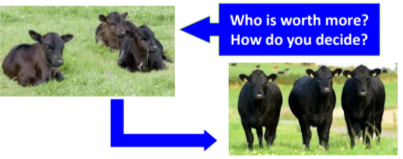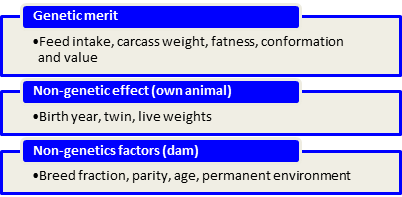
https://ec.europa.eu/eip/agriculture/en/find-connect/projects/bovine-beef-innovation-network-europe
When trading cattle for beef finishing it can be very difficult to tell which animal will generate the most carcass revenue, especially if conducted at very young age. Nowadays, the value of the animal is mainly decided by the purchasers based on the recorded breed of the calf, its age and the time of the year; even though, more information exists which could be used to improve the predicted value in the slaughterhouse.

Trying to solve this challenge, a decision-support tool capable of predicting an animal’s eventual carcass revenue was developed, named B.O.W. (Beef’s Own Worth); this tool values animals destined for slaughter based on their own merit and can be used to aid purchasing/selling decisions. The tool accounts for the genetic merit for traits relevant for beef production, as well as the non-genetic factors related to the particular individual, and to their dam, as shown in the following diagram.

The potential impact of this tool is to provide the buyer with more confidence. Furthermore, it will encourage the seller to be more focused on breeding for better carcass traits, including dairy farmers selling calves for beef and therefore, a more efficient production system will be achieved. Reassurance of breed composition as well as ancestry is possible through the use of DNA information. Therefore, this innovation is related to two BovINE themes: Socieconomic Resilience and Production Efficiency and Meat Quality.
B.O.W. is a Pilot Innovation from VistaMilk, currently being integrated into the ICBF (Irish Cattle Beef Federation) database. Future prospect for B.O.W. is to be available for all animals, of any age, destined for slaughter.
This innovation maybe is applicable to other European countries, considering their own data available and specific conditions.
Sources:
- Presentation of M. Kelleher, ISGC, January 2020, ICBF (https://www.icbf.com/wp/?page_id=22)
- Presentation of F. Dunne, Teagasc (PhD dissertation 2020)